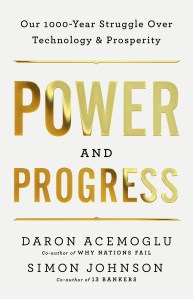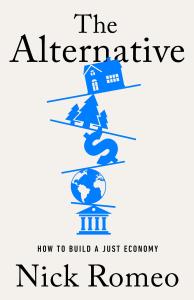Can We Build an Alternative Economy? A Conversation with Nick Romeo and Simon Johnson
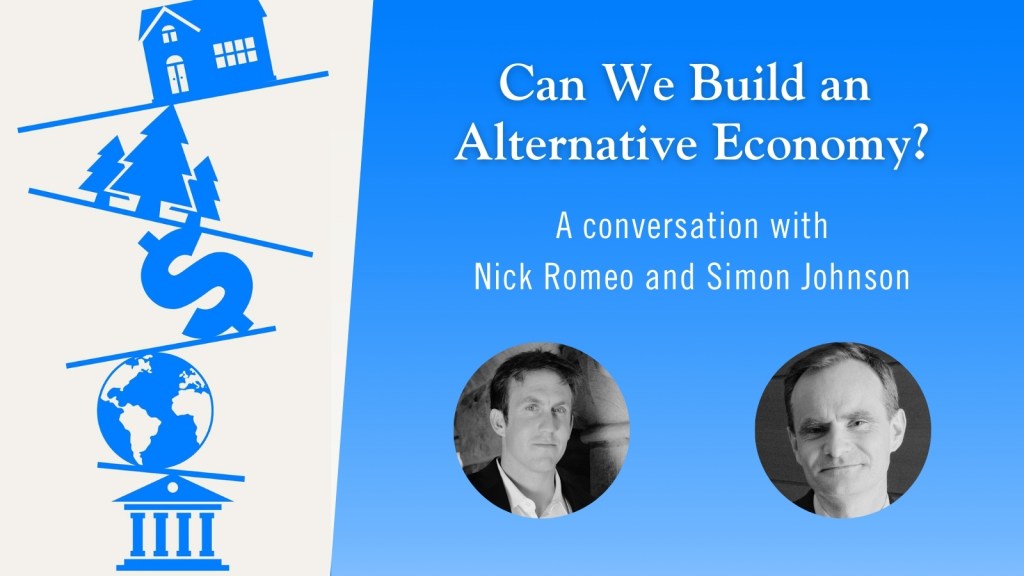
Our economy isn’t headed in the right direction. Despite the visibility of labor organizing at companies like Starbucks and Apple, participation in unions is at roughly 10%, half of what it was in the early 1980s. Meanwhile, about one in eight Americans lives in poverty, while the richest Americans see their fortunes grow. In fact, in 2018, Amazon founder Jeff Bezos, Microsoft founder Bill Gates, and investor Warren Buffett had more wealth than the poorest half of Americans — and since then, wealth inequality has only intensified.
Could we do better?
To find out, we consulted two experts. The first is Simon Johnson, the Kurtz Professor of Entrepreneurship at MIT’s Sloan School and former chief economist at the IMF. Along with co-author Daron Acemoglu, his latest book is Power and Progress: Our Thousand-Year Struggle Over Technology and Prosperity.
The second is Nick Romeo, who covers policy and ideas for The New Yorker and teaches in the Graduate School of Journalism at the University of California, Berkeley. His latest book is The Alternative: How to Build a Just Economy.
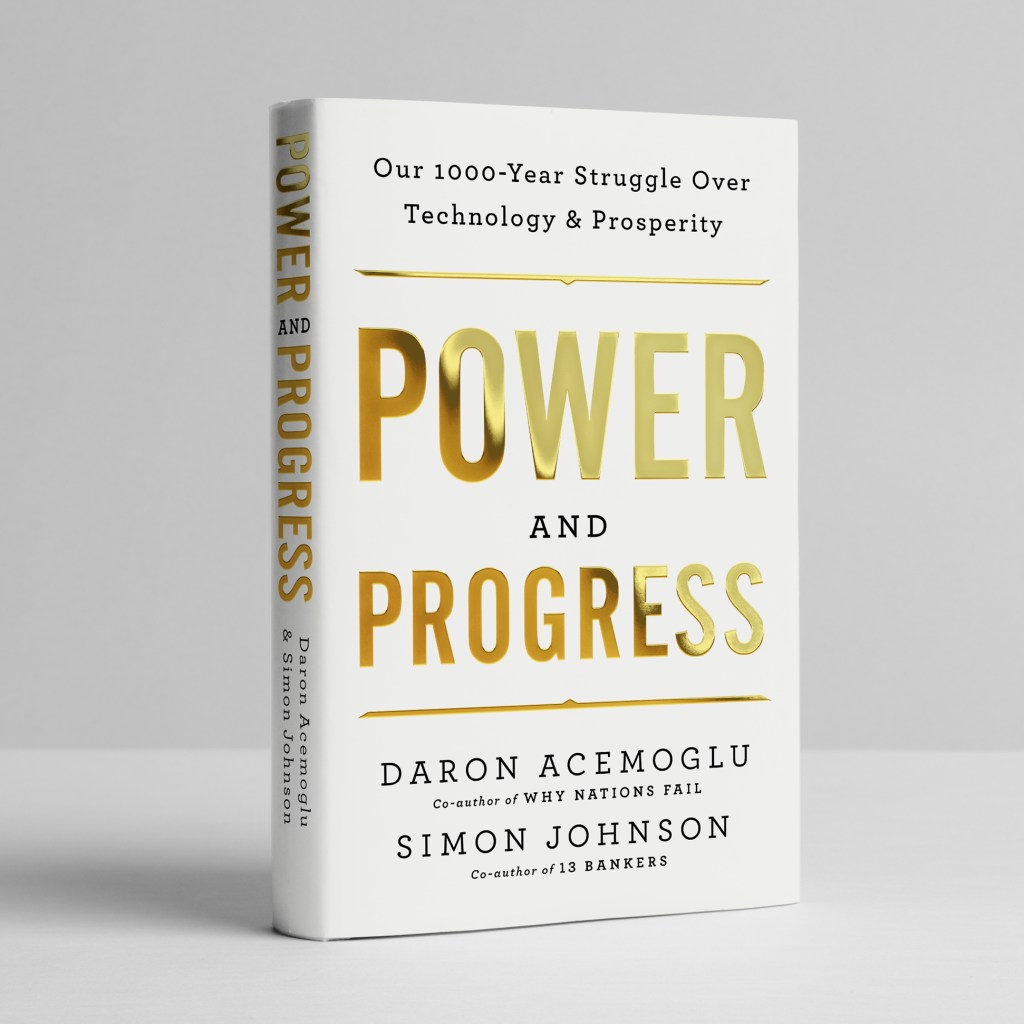
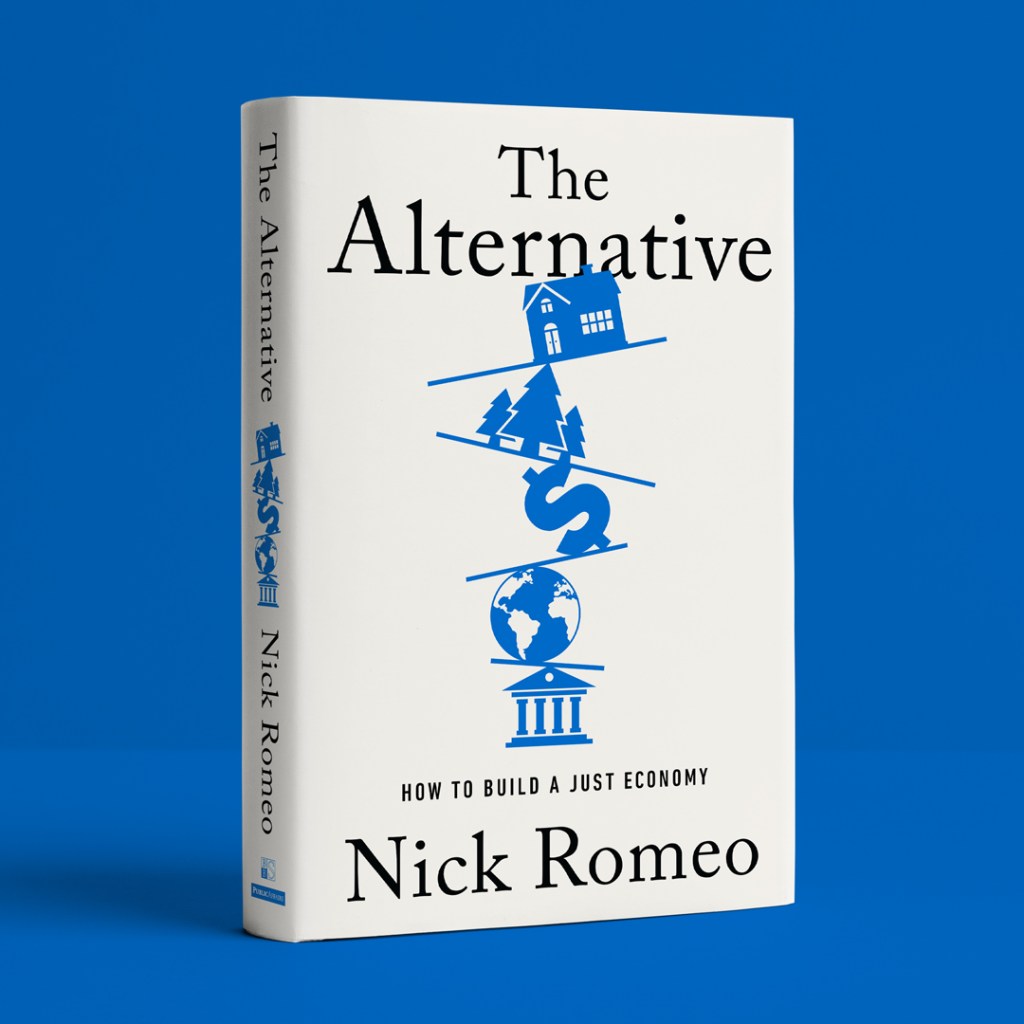
In this conversation, edited for length and clarity, Romeo and Johnson discuss the troubling state of economics education, why technology isn’t necessarily synonymous with progress, and how we could forge a more equitable economy.
PublicAffairs: Nick, you start your book with a chapter on the state of economics education around the world, and it’s pretty jarring what isn’t taught. Why was this a logical starting point for you?
Nick Romeo: One quote that I like is from a very senior figure who referred to the use of mathematics in the profession as “masturbation in the monastery.” I thought that was a striking phrase: there’s often a total lack of connection between economics and the outside world. Another person I quote in the same chapter recalls going to graduate school at a very fancy place in Paris and having a very brilliant colleague who had never heard of Adam Smith, Karl Marx, and many of the other major figures in the history of economic thought.
For me, this encapsulates the transition of the field from what used to be called political economy to just economics. One effect of this is the suppression of political, philosophical and ethical questions, which is disingenuous and perpetuates the status quo. This ends up just answering those questions in a particular way, often one that favors entrenched plutocratic powers. But the math-enabled guise of neutrality is very effective.
PA: Simon, you make a very similar argument in your book. We tend to think of technology as progress, full stop, but you mention a number of “revolutionary” technologies that have pretty dramatic dark sides.
Simon Johnson: Absolutely. Take the textile factories. While productivity gains were actually quite immense from spinning technology and then from weaving technology after the 1780s in the north of England, most of those benefits went to the people who owned the factory.
So if you look at what happened to wages, it’s very, very little progress from say 1800 into the 1830s, perhaps even into the 1840s. I mean, we know for a fact that children as young as six were pushing coal carts deep underground for 12 hours a day in pitch black in the 1840s. That’s 60 years after the productivity breakthroughs and no boost in wages.
So yes, I definitely agree. A lot of economists believe that technology is a thing that just arrives, and you can’t do anything about it. So trying to redirect technological change or progress is regarded as delusional.
PA: Nick, you discuss technology quite a bit in your chapter about true pricing. What is true pricing, and how might technology help us better implement it?
NR: True pricing is an attempt to measure all of the relevant externalities for a particular good and actually include those in the price mechanism. For example, a tomato might be sold in a grocery store for $1, but the “true price” might be $1.50 because of the damage caused by growing and transporting it, meaning the climate impact, water use, land use, and underpayment to workers who grew the crop.
These are difficult things to measure. But it would be easier with real-time monitoring of supply chains that let you track, say, cacao as it moves into factories and becomes mixed with butter and stabilizer and turns into a chocolate bar, which then gets on a ship and then crosses an ocean.
Technology could enable a host of opportunities for auditing. In terms of labor violations, there are not only egregious cases, like enslavement or underage workers, but also subtler things. Are people not being given bathroom breaks? Are working conditions safe throughout the supply chain? These are the sorts of questions True Pricing wants to answer.
PA: Simon, that makes me think of Amazon warehouses, in that the same technology that monitors the supply chain is potentially used to surveil employees as well. So how do we steer technology toward what Nick is describing instead of using the Amazon model of monitoring employees?
SJ: Our line is that AI represents a potential fork in the road. You can take the direction of more automation, more worker oppression, more suppression of dissent in the workplace and in society, and that is unfortunately the predominant tendency right now. But you could also take the other path, which is what Nick is describing. So I think anything that raises awareness and provides information is going to be helpful because we do have infrastructure to deal with these issues.
In the United States, we have the Occupational Safety and Health Administration. If it’s the case that more intense monitoring and surveillance leads to more worker accidents, which we talk about in the book, then you’re driving the workers too hard. You’re pushing them to do things that aren’t safe, and you’re likely violating these OSHA regulations.
NR: Absolutely. Another potential solution is employee ownership, which can distribute productivity gains among workers. These ownership structures used to be quite popular, even for giant corporations. If Amazon’s employees in the year 2022 owned as much of Amazon stock as Sears department store workers owned of Sears stock in the 1950s, each Amazon worker would have owned about $800,000 worth of stock. I mean, that would be a pretty astounding change.
Of course, there would still be reasons to care about surveillance, repetitive stress injuries, anti-union tactics, the company’s ecological footprint, etc. But if you are just zooming in on wealth inequality, worker ownership is a pretty compelling model — and Amazon is just one company. Imagine that model applied to the top hundred companies in America by size, and you start having something that looks very much like a middle class, the evaporation of which is a point of increasing concern for many people.
SJ: I think that’s a perfect comparison, Nick, because we could have stayed with that model. There’s no particularly good reason why we didn’t. I have some great speeches from leading American industrialists in the 1920s who say, “America is great because our workers are highly productive, and we treat them well and give them high wages, and they buy our cars.” That was shareholder capitalism. That wasn’t worker cooperative capitalism. But that’s not the direction that the American version of capitalism took, but not for any compelling efficiency or other necessary reason. It’s because fashion changed and a more libertarian perspective prevailed.
Throughout history, technological change — whether it takes the form of agricultural improvements in the Middle Ages, the Industrial Revolution, or today’s artificial intelligence — has been viewed as a main driver of prosperity, working in the public interest. The reality, though, is that technology is shaped by what powerful people want and believe, generating riches, social respect, cultural prominence, and further political voice for those already powerful. For most of the rest of us, there is the illusion of progress.
Daron Acemoglu and Simon Johnson debunk modern techno-optimism through a dazzling, original account of how technological choices have changed the course of history. From vivid stories of how the economic surplus of the Middle Ages was appropriated by an ecclesiastical elite to build cathedrals while the peasants starved, to the making of vast fortunes from digital technologies today as millions are pushed towards poverty, we see how the path of technology is determined and who influences its trajectory.
To achieve the true potential of innovation, we need to ensure technology is creating new jobs and opportunities rather than marginalizing most people, through automated work and political passivity. We need to use the tremendous digital advances of the last half century to create useful and empowering tools, and seize back control from a small elite of hubristic, messianic tech leaders pursuing
their own interests.
With their breakthrough economic theory and manifesto for building a better society, Acemoglu and Johnson provide the understanding and vision to reimagine and reshape the path of technology and create true shared prosperity.
